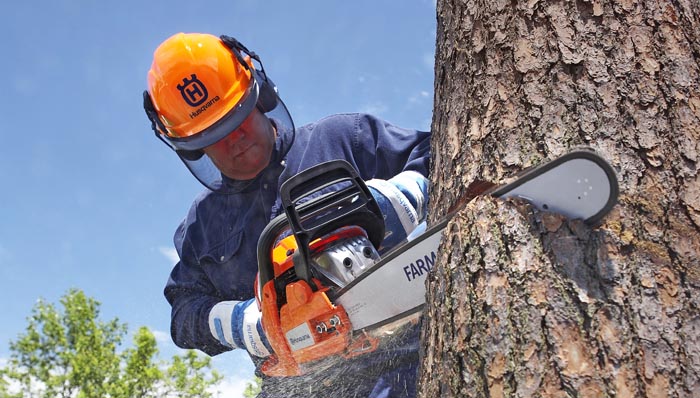Chainsaws, like any power-driven gear, need upkeep and a bit of TLC, especially if you want them in tip top shape. It is not only a matter of convenience, but it can be a matter of safety as well. A dull or poorly serviced chainsaw will not cut well. This will force you to add force to the machine, and potentially end up in a dangerous situation.
Here are 4 key areas where your chainsaw will need routine maintenance that are within even a beginner’s abilities. If approached with a bit of common sense they will help keep your chainsaw running like new.
CHAIN
If the chain of your saw chatters during use, produces more sawdust than small chips, makes rounded cuts or fails to cut, then it needs to be sharpened.
You can remove the chain by loosening or removing the bolts at the base of the bar, remove the bar or back off the tension on the bar and remove the chain from the drive sprocket. Examine it for any damage to the tie straps, rivets and drive links.
If you are satisfied that it is still functional, either reattach it to the bar (switch it over so that it goes back in with what was the bottom groove now on the top to guarantee even wear) or, you may opt to place the chain in a solution to soften the tar and dirt, and scrub it with an old toothbrush. Dry carefully and place it in a bath of clean 10-weight motor oil for 12 hours.
You can then reinstall the chain and begin sharpening. Use a round chainsaw file that is appropriate for your chain size. Reattach the chain with the cutting teeth facing forward on the top, adjust the tension on the bar with the tensioner screw so the chain fits snuggly, but can still be turned over easily by a gloved hand. No slack should be hanging under the bar. While pulling up on the front of the bar, tighten the rear bar nut first, then check the tension before moving to tightening the front nut.
GUIDE-BAR GROOVE
Clean the channel that guides the chain along the bar, while your chain is soaking in the motor oil, since it can get congested with sawdust and dirt. Detach the bar and clean the groove with a piece of cardboard or a small flat tip screwdriver for pieces that are hard to remove. File down nicks, by filing perpendicularly to the bar’s flanks.
SPARK PLUG
Through a fuel mix of petrol and oil, a two-stroke engine can easily result in a fouled spark plug. By using a plug socket, remove the plug and use a wire brush to clean it. Follow up by using your feeler or wire gauges to set the gap between the electrodes, gently tap on the outer electrode to close the gap or use a flat screwdriver to widen the gap. Any accumulation of material or electrodes that are lighter than a dark grey to light brown colour shows a fuel/air mix problem and should be dealt with by your local service shop.
When you are finished cleaning, replace the plug with the socket, and avoid over tightening. If you are installing a new plug, be sure it the recommended type.
STARTER
Gently pull the starter cord out to its full allowance and inspect for wear. Check its recoil by allowing the cord to draw back in. If it is damaged or if any binding happens during rewind, detach the starter housing. Clean out accumulated dirt and grass clippings, and lubricate the recoil spring with light oil. Reattach the rope if necessary, but be cautious when doing this task, to avoid unleashing the wound spring this is beneath the pulley. Grab a pair of goggles and unleash the spring slowly by unwrapping the cord.
If you are looking for small engine repair services in Ottawa, mobile car battery boosting, lawn mower and lawn tractor repairs and tune-ups, or snow blower repairs then give us a call to book your mobile small engine repair today. We fix, repair, and tune-up small engines such as lawn mowers and snow blowers. The best part is that we come to you so no more waiting in line or travelling back and forth to fix your small engine equipment



